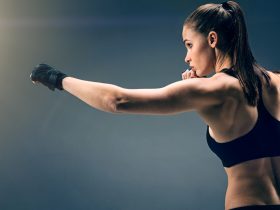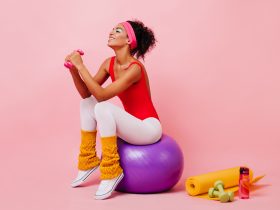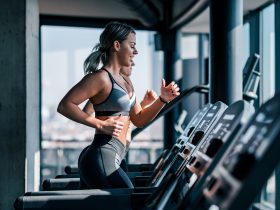Athletes and other busy people often use different kinds of stretching to get more flexible and mobile. These involve stretching or contracting a muscle or tendon to make it more flexible. Active stretching is one way. In this method, you use your own muscles to pull against a force, which causes the stretch.
How does active stretching work?
In the realm of fitness and wellness, the importance of flexibility and mobility cannot be overstated. Active stretching is a dynamic approach to enhancing these crucial aspects of physical health. Unlike traditional passive stretching, where external forces facilitate the stretch, active stretching engages your muscles in the process. This article delves into the world of active stretching, its benefits and techniques, and how it can be seamlessly incorporated into your fitness routine.
How does active stretching differ from other kinds of stretching?
Ballistic stretching
Both ballistic stretching and dynamic stretching involve movement. You don’t move a body part to the end of its range of motion, though. Instead, you try to go beyond this range. Most of the time, these stretches require moves that can’t be controlled and could hurt you. Because of this, most people shouldn’t use this way of stretching.
Dynamic stretching
Dynamic stretching is a way to stretch that involves movement. It involves moving a body part through its full range of motion but not beyond it. Most of the time, these moves are specific to a sport and are done as a warmup before a training exercise. Leg swings and shoulder circles are two popular ones.
Passive stretching
Active stretching uses one muscle group to stretch another. Passive stretching, on the other hand, uses an outside force to pull the muscles apart. The pull of resistance can come from a different part of your body, a person, or an object. Just like with physical stretching, you stay in the position for a while. Passive stretching is often used as a way to relax your muscles and joint tissue after a workout.
Isometric stretching
Isometric stretching involves holding a stretch without movement. This can help increase static flexibility and is often used in rehabilitation settings.
How to stretch actively?
Active stretching is easy to do, but some poses may take some practice to get right. Most of the time, this type of stretching is done after a workout, as part of a mobility workout, or as part of a yoga lesson. Active stretching can be done almost anywhere because it doesn’t require any special tools. This is how:
1. Choose the muscle you want to stretch and a move that goes with it.
2. Flex the muscle on the opposite side of the one that is being stretched.
3. Hold the pose for about 10 seconds, or until the target muscle feels like it’s being stretched.
4. If you want to stretch both legs or both arms, you can follow these steps again for the other joint.
Some Dynamic Stretching Examples
Hamstring stretching with movement
- Targets: The hamstrings
- Agonist: The hip flexors and core muscles
- Antagonist: the hamstrings
How to:
Put your back down. Putting a pillow under your head might help. Keep your feet flat on the ground and your back straight.
Lift one leg straight up to the sky until you feel a stretch in your hamstring. Ten to fifteen seconds.
If your tailbone starts to tuck, lower the leg you have lifted a little or bend the leg you have on the floor and put the foot on the floor for support.
Active triceps stretch
● Targets: the triceps
● Agonist: the biceps and shoulder muscles
● Antagonist: the triceps
How to:
Keep your back straight and your shoulders back. Without moving your shoulder, raise one arm straight up to the ceiling.
Curl your hand down behind your neck and in between your shoulder blades by bending your elbow.
For 10 to 15 seconds, try to maintain your elbow pointed up and your hand further down your back.
Dynamic chest extension
Active chest stretch
● Targets: the chest muscles (pectorals) and biceps
● Agonist: the deltoids, rhomboids, mid traps, and other back and shoulder muscles
● Antagonist: the chest muscles and biceps
How to:
Take charge of your posture. Extend both arms out to the side at a 90-degree angle, keeping your elbows completely straight. Turning your palms forward or up may help you stretch further.
Spread your arms as far as they can go, letting them hang loosely at your sides. Put an end to the movement when you feel a good stretch across your chest and upper arms.
Keep your rib cage in and your back straight for 10 to 15 seconds.
Active quad stretch
● Targets: the quadriceps
● Agonist: the hamstrings
● Antagonist: the quadriceps
How to:
Your feet should be hip-width apart, your shoulders back, and your body upright. You might wish to lean on something, like a wall or a chair, for support.
To try and contact your buttocks with your buttocks, bend one knee and lift your foot behind you. Keep the knee aligned with the knee you’re leaning on and point straight down.
The stretch can be lessened by flexing the hip and bringing the knee forward. Keep your breath for ten to fifteen seconds.
Active stretching is a versatile technique that offers numerous physical and mental benefits. By incorporating various active stretching methods into your fitness routine and following safety guidelines, you can enhance your flexibility, reduce the risk of injuries, and unlock your body’s full potential.















Find Us on Socials